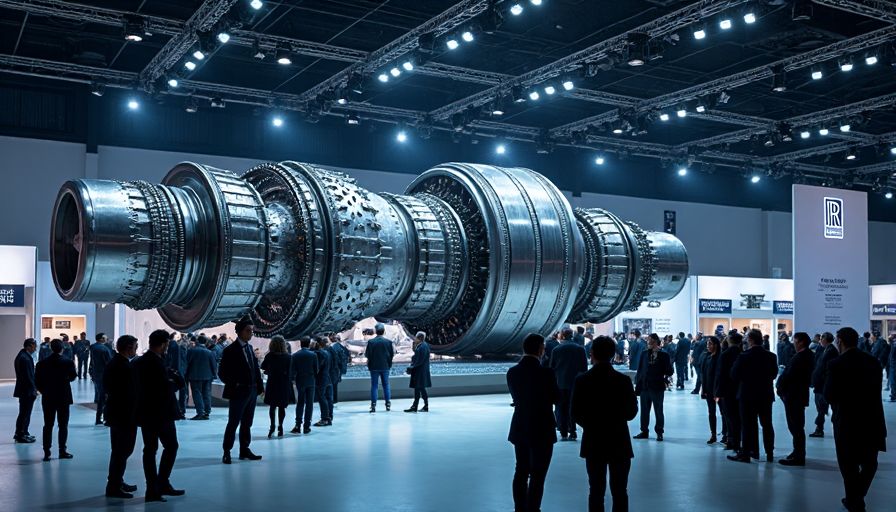
Navigating the AI Revolution at Germany's Trade Fair
At a bustling industrial fair in Germany, companies are absorbing the profound impacts of artificial intelligence and contemplating their roles in the digital future. The event, which showcased over 4,000 firms, served as a live demonstration of how AI is reshaping sectors such as production, robotics, and energy.
AI Transformations on Display
One of the fair's most striking exhibits was a gigantic Rolls-Royce aircraft engine. This high-tech marvel had its production process fine-tuned by AI systems developed through a collaboration between Microsoft and Siemens. Attendees were captivated, seeing firsthand the potential of AI to transform traditional manufacturing processes.
Real-World Examples and Applications
In a concrete example of AI's benefits, the technical director at a family-owned firm, Koerner Electric, explained how custom-built circuit boards are now produced more efficiently. The company has been leveraging AI for three years, notably using it to accelerate programming and to analyze critical measurements in both optical and electrical processes. This innovation illustrates the broader narrative: AI is not merely a futuristic concept but a practical tool that provides faster, more consistent results without additional labor.
Challenges and Reservations in the German Mittelstand
While large-scale demonstrations highlighted the mighty potential of AI, many traditional small and medium enterprises (SMEs) of Germany’s famed Mittelstand remain cautious. For instance, Andrea Raaf from Herz Aetztechnik remarked that the individualized nature of their laser-manufactured vehicle and electronics parts doesn't easily lend itself to AI solutions.
This hesitation reflects a wider sentiment among companies tasked with high-end engineering: uncertainty about fully integrating rapidly evolving technologies into their specialized processes. Concerns over cost and data quality are commonplace, with many firms finding it challenging to justify the significant investments required.
The Digital Divide and Global Competition
Experts warn that if German industry does not embrace AI, it risks falling behind its American and Chinese counterparts. Agnes Heftberger, managing director of Microsoft Germany, emphasized that reluctance to adopt AI could lead to a competitive disadvantage on the international stage.
Automation engineers and industry specialists like Loke Olsen also noted the importance of ensuring AI systems are flawless, particularly in sectors with strict safety and quality regulations, such as pharmaceuticals. The stringent requirements mean that any malfunction or misinterpretation by AI could have serious consequences.
Future Implications and Collaborative Efforts
Despite the challenges, the potential gains from AI integration are immense. A recent Microsoft survey revealed that nearly half of German industrial firms have adopted AI for select business functions. However, only a small fraction—about seven percent of machine builders—plan to use generative AI for product design, suggesting that while there is optimism about AI's transformative power, widespread, deep integration remains in its early stages.
Institutes like Fraunhofer are actively touring the country to demonstrate viable AI applications across diverse fields, from carpentry to healthcare. Juliane Segedi from Fraunhofer underlined the importance of collaboration: by pooling data, companies can develop more effective solutions, paving the way for enhanced productivity and innovation. She also stressed the need for a shift in mindset among labor unions, urging them to view AI not as a threat but as an aid to foster new ideas and efficiencies.
Concluding Thoughts
The story unfolding at Germany’s industrial fairs paints a picture of both promise and caution. Even as high-profile displays of AI innovation capture public imagination, the grounded reality of traditional manufacturing reveals a cautious approach to change. The trade fair thus stands as a microcosm of a broader industrial evolution: a delicate balance between embracing cutting-edge technology and preserving the nuanced craft of specialized production.
Note: This publication was rewritten using AI. The content was based on the original source linked above.